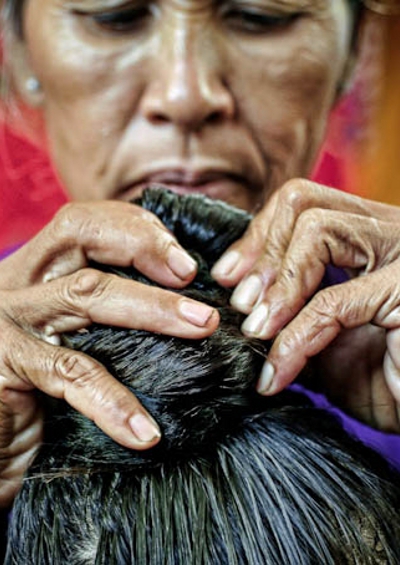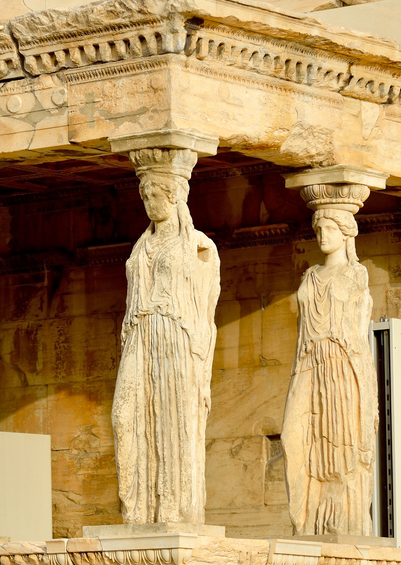Minorities in Vietnam: The Muslim Champa People
The beautiful rituals of the Champa people in Vietnam.
December 7, 2014

Ly Hoang Long is a freelance photographer specializing in travel and landscape photography.
Along the middle coast of Vietnam, from Ninh Thuan to Binh Thuan province, there are about 39,000 Islamic Champa people (also called Bani Champa, Bani means Beni in Arabic, the son of the Prophet Mohammed).
Their religious culture is not only a part of the traditional identity of the Champa people, but also has a cultural impact on the whole region. One of the most unique events is the maturity ceremony (or Karơh ceremony).
At the age of 15, before the first menses period, Champa girls attend the maturity ceremony, which is one of the most important events of their lives. Sometimes, because of financial difficulty, a girl might miss the ceremony. That becomes the spiritual debt that she has to pay at some point in her life. Of course, the later ceremony is much less meaningful than the one during adolescence.
To organize the ceremony, after having the priest’s approval, the girls’ families choose a place — it might be someone’s courtyard. Two tents are set up — the big one in the East-West direction for the priests and the small one for the girls.
On the selected date, the senior priest of Champa community performs the ritual. A group of four or five girls of the same age gather in a colorful tent. They are excited, waiting for the most important moment.
It starts with the cleaning ritual.
An old woman, the most respected in the community, takes the girls to a fountain, where she bathes them by pouring the water on them from head to toe. This means that they are all clean and ready for preparation.
Back in the tent, the girls are well prepared for the main ritual. Each girl is surrounded and attended by two or three Champa women. They first put the girls in white dresses, then help them put on bronze (or gold) adornments like bracelets, rings and necklaces.
The girls’ hair is brushed carefully and put up in a bun. When all the preparations are complete, the girls are dressed in traditional yellow robes and their heads are covered in red woven material. Now they are ready.
Queuing in line, anxious and excited, they step into the main tent where the priests are sitting in a circle. The senior priest solemnly plays the main role. He puts his hand on each girl’s head, starts praying and then uses scissors to cut off a little bit of her hair.
He uses the same procedure for the other girls. When the ritual is completely finished, the girls go back to their own tent, remove their traditional robes and have a break. After a few minutes, they go to the priests’ tent again to express their gratitude by bowing respectfully. The senior priest prays and wishes them all of the best things for their lives.
Afterwards, the girls are proudly congratulated and offered gifts and money by their immediate families and cousins. This turning point brings them to a new period in their lives. They now have the same rights as the other adult females in the community.
Text and photographs by Ly Hoang Long
 Enlarge The girl’s hair is brushed carefully and bundled up.
Enlarge The girl’s hair is brushed carefully and bundled up. Enlarge Queuing in line, anxious and excited, they step into the main tent, where the priests are sitting around.
Enlarge Queuing in line, anxious and excited, they step into the main tent, where the priests are sitting around. Enlarge A respected woman pouring water on a girl’s head for the first ritual, purifying her.
Enlarge A respected woman pouring water on a girl’s head for the first ritual, purifying her. Enlarge Back in the tent, the old woman looks at the traditional offerings.
Enlarge Back in the tent, the old woman looks at the traditional offerings.The Other Hundred is a unique photo-book project (order here) aimed as a counterpoint to the Forbes 100 and other media rich lists by telling the stories of people around the world who are not rich but who deserve to be celebrated.
Its 100 photo-stories move beyond the stereotypes and cliches that fill so much of the world’s media to explore the lives of people whose aspirations and achievements are at least as noteworthy as any member of the world’s richest 1,000.

Selected from 11,000 images shot in 158 countries and submitted by nearly 1,500 photographers, The Other Hundred celebrates those who will never find themselves on the world’s rich lists or celebrity websites.


